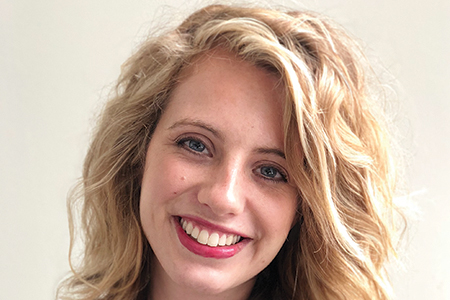Making No Cents: The Hidden Cost Of American Illness
By Lilly Stairs
 You’ve just picked up your mail and are rifling through it ... an Amazon package, a thank you note, a holiday card. You flip to the final envelope and your heart sinks.
You’ve just picked up your mail and are rifling through it ... an Amazon package, a thank you note, a holiday card. You flip to the final envelope and your heart sinks.
Another medical bill. And you know this one is going to do some damage.
- Eight specialist appointments = $2,400
- Capsule endoscopy test = $2,500
- A year’s worth of biologic medication = $120,000
- A two-week stint in the hospital = $200,000
These daunting numbers all have appeared on my medical bills over the course of just one year. And this doesn’t even come close to capturing the laundry list of expenses associated with my chronic illnesses. From regular blood draws to parking tickets to missed work — it adds up fast.
I’m fortunate to say that since my back-to-back diagnoses of Crohn’s disease and psoriatic arthritis in 2011 and 2012 respectively, insurance has covered the majority of my medical expenses. Arguably the most important expense has been my medication. While it costs $20,000 every two months, it has saved my life. Without my medication, I am bedridden with total body arthritis and bleeding ulcers in my small intestine, barely able to move.
I often wonder where I would be without this medication and the care I’ve had in major medical hubs. I am reminded daily how fortunate I am to have this access.
I spend my days working with patients, many without insurance or stuck with an insurance provider that offers poor coverage. A large percentage of the patients we see at Clara are considering clinical trials as a treatment option because their insurance refuses to cover a medication that works for them.
How did we get here? Why are patients forced to live in pain, pursue experimental therapy, or go bankrupt?
And the real frustration is that it is not even reducing costs. Let’s refer back to the numbers, shall we? A two-week stint in the hospital — 14 days of my life fully bedridden and barely able to talk — cost my insurance company a grand total of $200,000. A year’s worth of my biologic medication — 365 days of my life where I am healthy, active, and a productive member of society — comes to $120,000.
I think about the opportunities I’ve had to further my career, to take trips, to have a glass of wine with friends, all because I, fortunately, had the right kind of insurance. But how many people don’t? How much have we, as a society, lost in talent and progress because we saddle the sick with even more stress?
Something isn’t adding up, financially or ethically.
ONE IMPORTANT STEP WE CAN TAKE NOW
But healthcare isn’t going to heal overnight. It’s going to take time and a coalition of every stakeholder involved to develop viable solutions. There is one critical step, however, that I believe we can begin enacting now, and it has the potential to make a real difference. We need to ensure that we are educating patients on all financial resources available outside of insurance — whether this be aid from a pharma company, nonprofit advocacy organization, or specialty clinic. It is our job as advocates, healthcare providers, and industry allies to get this information into the hands of the patient so that they have every tool at their disposal.
Let’s help prevent patients from having to make the heartbreaking decision between their life-saving medication or the next family meal on the table.
LILLY STAIRS is the head of patient advocacy at Clara Health and a board member for the American Autoimmune Related Diseases Association (AARDA). This guest column appears as part of a collaboration with Inspire, a million-member healthcare social network that helps life sciences companies connect with patients.
